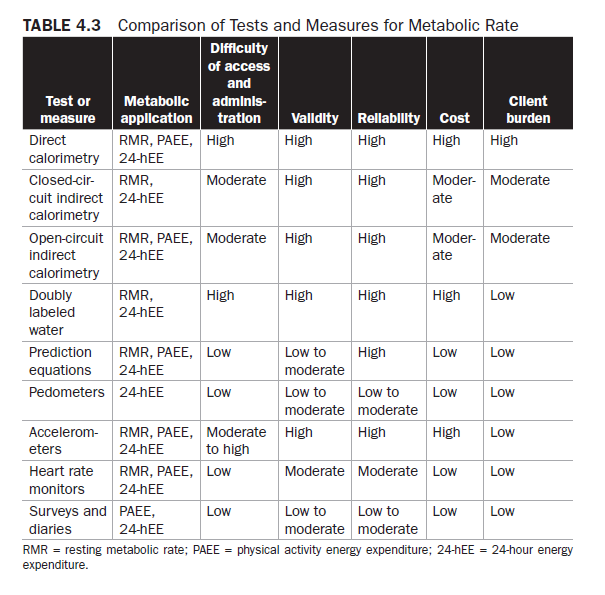Comparing Metabolic Rate Measurement Methods
by NSCA's Guide to Tests and Assessments
Kinetic Select
May 2017
Although accelerometers, pedometers, heart rate monitors, and questionnaires are not as accurate as direct and indirect calorimetry in determining metabolic rate, these less expensive tools can be used to create exercise plans, particularly those focused on health promotion and fitness.
The following is an exclusive excerpt from the book NSCA's Guide to Tests and Assessments, published by Human Kinetics. All text and images provided by Human Kinetics.
Although accelerometers, pedometers, heart rate monitors, and questionnaires are not as accurate as direct and indirect calorimetry in determining metabolic rate, these less expensive tools can be used to create exercise plans, particularly those focused on health promotion and fitness. For example, if a person wants to increase her fitness level by doing aerobic exercise four times a week at a predetermined intensity, a heart rate monitor would be an excellent tool to use for monitoring intensity. The fitness professional could help the client determine the appropriate target heart rate, and then show the client how to use the heart rate monitor safely to achieve the intensity goal. Table 4.3 provides a summary of measurement methods for metabolic rate.
A pedometer might be the tool of choice for a previously sedentary person who wants to increase physical activity levels to lose weight or decrease disease risk. In this instance, the fitness professional could use the pedometer to get a baseline measure of steps per day for the client, and then help the client set a goal to increase the number of steps per day in a safe progression.
Accelerometers and questionnaires might be used to give clients feedback on how their activity levels fluctuate during the day or from day to day. These tools provide a diary or history of the client’s activity that can be reviewed with the client. Goals can be set to increase overall physical activity, physical activity during specific time periods, or the intensity of activity at certain points. All of this information could be mapped out, depending on the client’s needs and objectives.

Developed by the National Strength and Conditioning Association (NSCA), this comprehensive text offers extensive information on performance-related assessment and testing for strength and conditioning professionals in measuring key fitness components. The book is available in bookstores everywhere, as well as online at the NSCA Store.
- Privacy Policy
- Your Privacy Choices
- Terms of Use
- Retraction and Correction Policy
- © 2025 National Strength and Conditioning Association